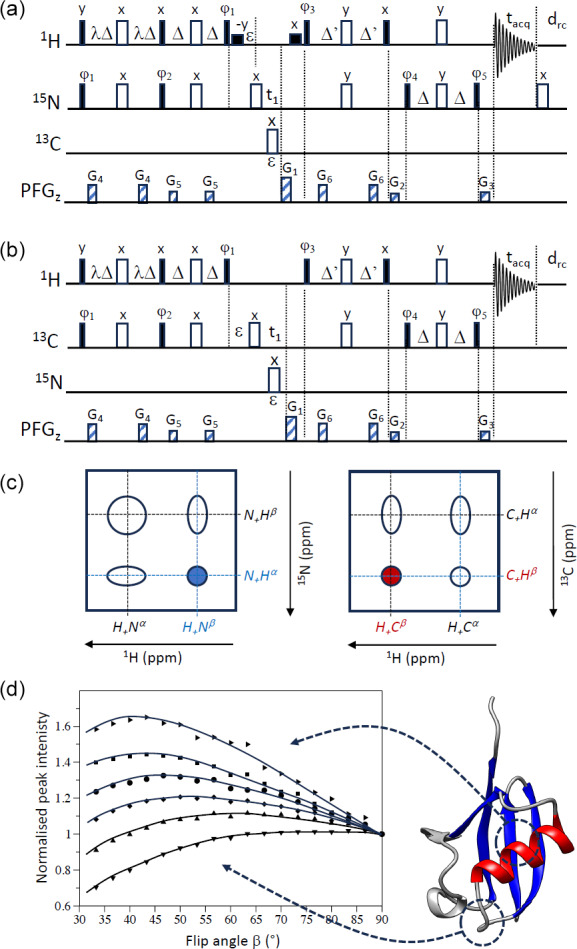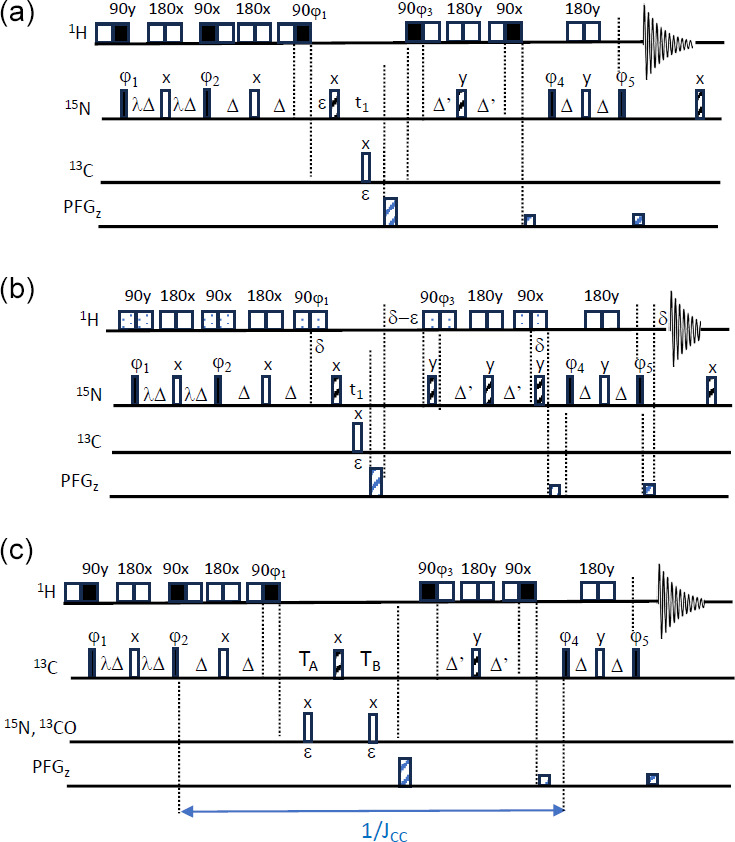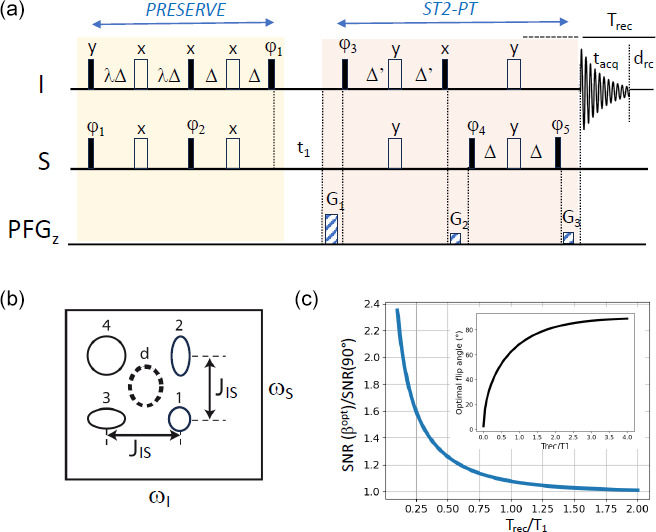PRESERVE: adding variable flip-angle excitation to transverse relaxation-optimized NMR spectroscopy.
Q3 Physics and Astronomy
Magnetic resonance (Gottingen, Germany)
Pub Date : 2024-09-12
eCollection Date: 2024-01-01
DOI:10.5194/mr-5-131-2024
引用次数: 0
Abstract
We introduce the "Polarization Restoring Excitation SEquence foR Versatile Experiments" (PRESERVE) pulse sequence element, allowing variable flip-angle adjustment in 2D H- N and H- C transverse-relaxation-optimized-spectroscopy (TROSY)-type correlation experiments. PRESERVE-TROSY exploits a remarkable array of up to nine orthogonal coherence-transfer pathways, showcasing the remarkable potential of spin manipulations achievable through the design and optimization of nuclear magnetic resonance (NMR) pulse sequences.



保存:增加可变翻转角激励横向松弛优化核磁共振波谱。
我们引入了“偏振恢复激励序列用于多功能实验”(PRESERVE)脉冲序列元件,允许在二维1h - 15n和1h - 13c横向松弛优化光谱(TROSY)型相关实验中进行可变翻转角调整。reserve - trosy利用了多达9个正交相干转移路径的显着阵列,展示了通过核磁共振(NMR)脉冲序列的设计和优化实现自旋操纵的显着潜力。
本文章由计算机程序翻译,如有差异,请以英文原文为准。
求助全文
约1分钟内获得全文
求助全文

 求助内容:
求助内容: 应助结果提醒方式:
应助结果提醒方式:


